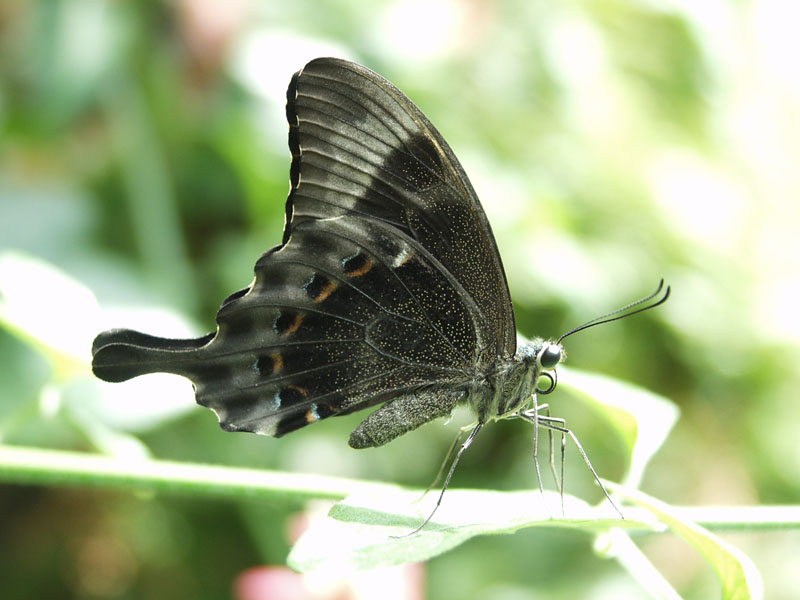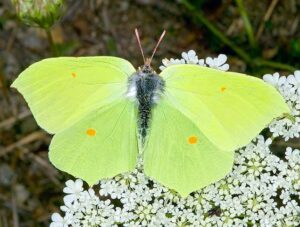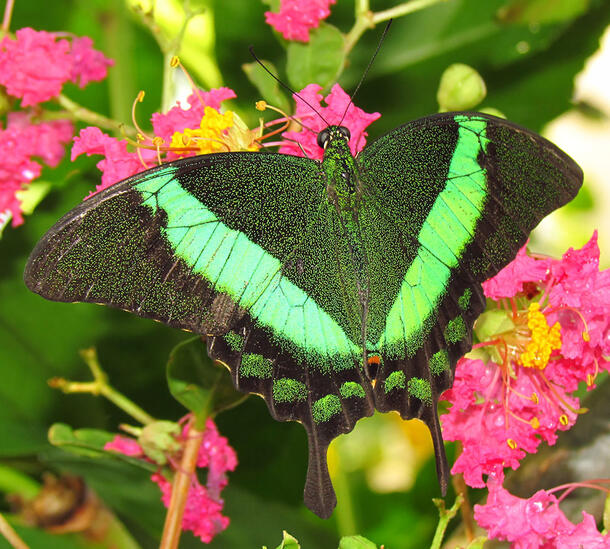
Emerald Swallowtail
The Emerald Swallowtail or Papilio palinurus has a wingspan reaching about 80 – 100mm. The dorsal sides of the wings are covered by a powder of green scales and their backgrounds vary from dark greenish to black, with broad bright emerald green metallic bands. The undersides are black with orange, white and blue spots along the edges of hind wings, that show extended tails at the end.
Did you know?
The iridescent green sheen of the bands of this butterfly is not produced by pigments, but is structural coloration produced by the microstructure of the wing scales. They refract the light and give rise to blue and yellow visible reflections, producing the perception of green colour when additively mixed.
The emerald swallowtail (Papilio palinurus) is sometimes called a banded peacock, but it might just as easily be called a chameleon. Like the shade-shifting lizard, the emerald swallowtail changes color depending on the angle of the light, and it has a strikingly disparate appearance from one side to the other.
The bright bands on the butterfly’s generally dark green upper side aren’t caused by pigments but by the surface of unique microstructures in the scales on its wings. When the scales reflect blue and yellow light, their tight arrangement allows the colors to mix together and be perceived as the iridescent green bands from which the butterfly takes its common name.
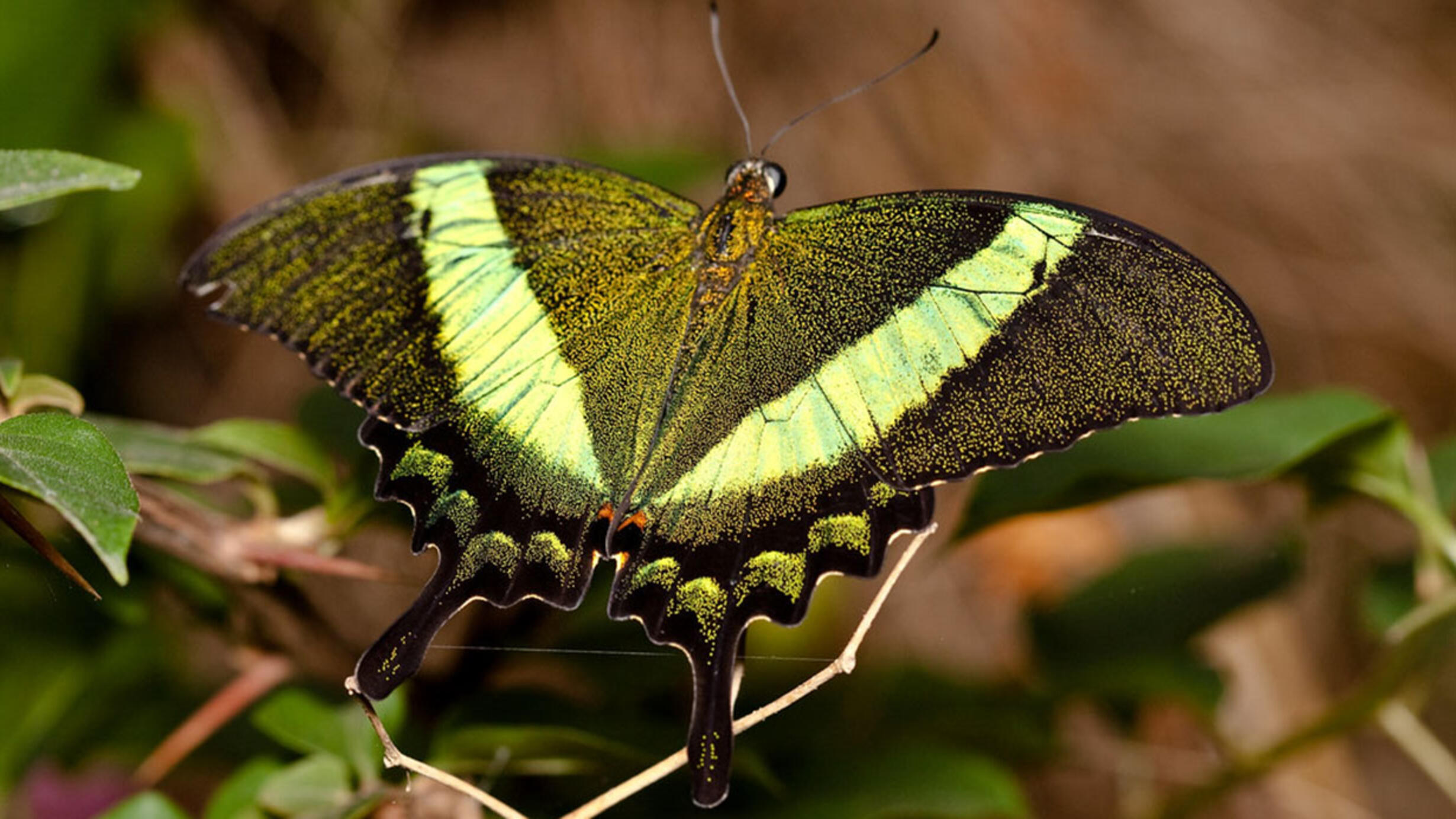
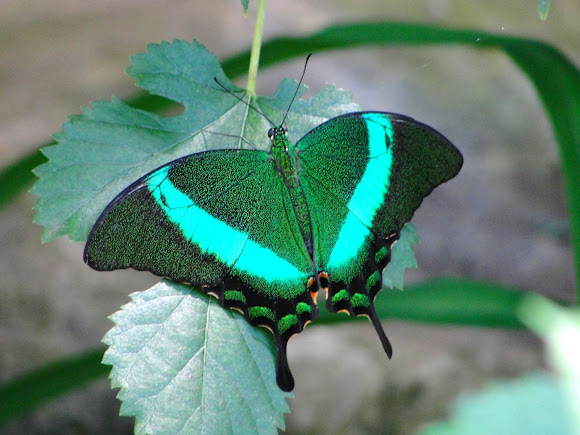
But when its wings are viewed from another angle, the human eye will see the bands as only yellow or blue, respectively. And viewed from below, an emerald swallowtail looks like a completely different butterfly. Its underwing or ventral side is black and gray with blue, orange, and white spots—coloration typical of the upper side of other swallowtail butterfly species, which likely helps the insect to camouflage itself from predators.
The emerald swallowtail has a wingspan of up to 4 inches (10 cm) and belongs to the family Papilionidae. These large, colorful, mostly tropical butterflies include the largest in the world, such as the birdwing butterflies of the genus Ornithoptera.
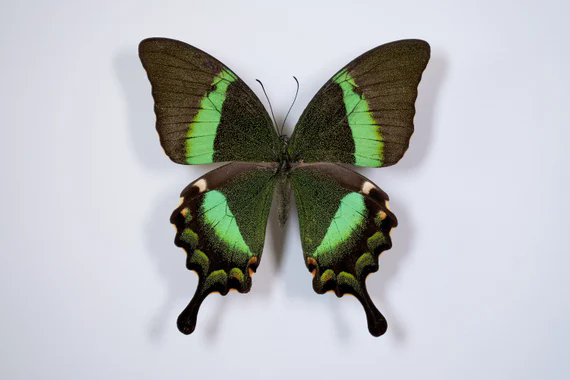
Native to Southeast Asia, the emerald swallowtail is found primarily in Burma, Peninsular Malaysia, Sumatra, Borneo, Indonesia, and the Philippines. The emerald swallowtail’s caterpillars—like those of the tiger, spicebush, anise, giant, and black swallowtails—resemble bird droppings when small. These cleverly camouflaged larvae, like all swallowtail caterpillars, have an osmeterium: a forked-shaped gland that emits a foul smell and can also be extended when it rears its head back in response to a threat. They feed on citrus trees, making the species unpopular with citrus growers.
Papilio palinurus, the emerald swallowtail, emerald peacock, or green-banded peacock, is a butterfly of the genus Papilio of the family Papilionidae. It is native to Southeast Asia, but is regularly kept in butterfly houses around the world.
The genus name Papilio comes from the Latin word papilio meaning butterfly. The species name palinurus derives from Palinurus, the name of the pilot of Aeneas’s boat in Virgil’s Aeneid.
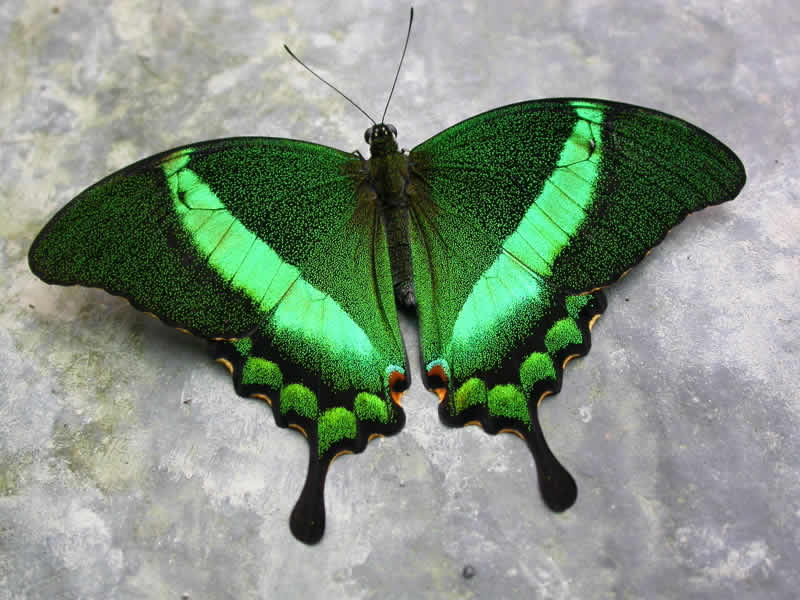
Papilio palinurus has a wingspan reaching about 8–10 centimetres (3.1–3.9 in). The dorsal sides of the wings are covered by a powder of green scales and the background vary from dark greenish to black, with broad bright emerald green metallic bands. The undersides are black with orange, white and blue spots along the edges of hindwings, that show extended tails at the end.
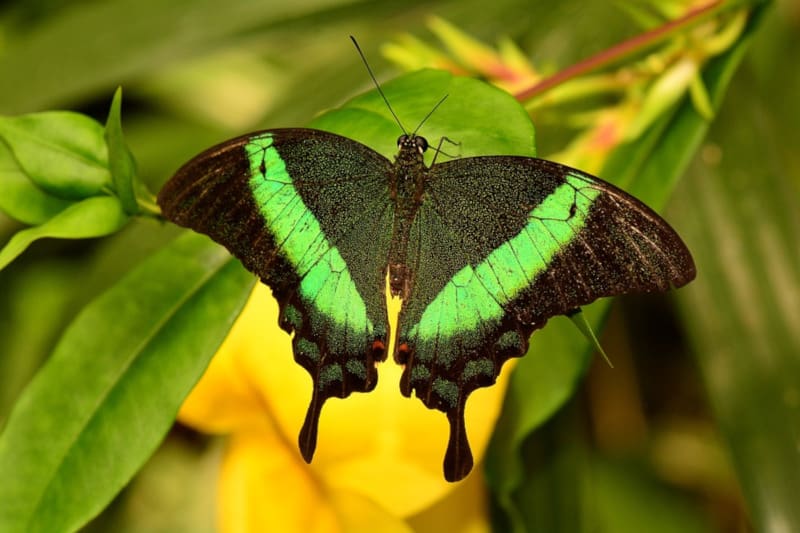
The flight of these butterflies is swift and quite fast. Caterpillars feed on plants of genus Euodia belonging to the Rutaceae, commonly known as the rue or citrus family.
Etymology Of Name
The genus Papilio is Latin for butterfly. In Greek mythology, Palinurus was a ship helmsman who sailed survivors away from Troy after its destruction.
Habitat
Emerald Swallowtails are primarily found in forested areas but they are known to venture out into surrounding areas in search of nectar plants.
The species ranges flow within India, southern China, Burma, Cambodia, Thailand, Singapore, Indochina, Sumatra, Borneo, Java and other islands of Indonesia and the Philippines. It can be found in open areas, including forest clearings and edges, river banks, rock outcroppings, parks, empty lots, and near human habitations. E. multifasciata is a common species throughout it’s range. It appears in open areas of lowland and submontain forest, as well as, secondary vegetation. The common sun skink is also common in highly disturbed habitats such as bamboo or coconut groves from near sea level to 1200 meters above sea level.
Life history
After mating, the female flies through the canopy laying her eggs on the leaves of the host plant. When the eggs hatch, the larvae feed on the leaves. Once the larvae have gone through all of their caterpillar instars, a chrysalis is formed on the woody portion of the host plant.
Flights
The flights of the Emerald Swallowtail in the wild is currently unknown.
Fun Facts
The color and patterns seen on most butterflies are created by the overlapping scales and the color of the pigment on each scale. In the case of the Emerald Swallowtail, the scales on the inside of the wings are like small prisms which make the color iridescent. By looking from different angles, a change in color can be observed.

